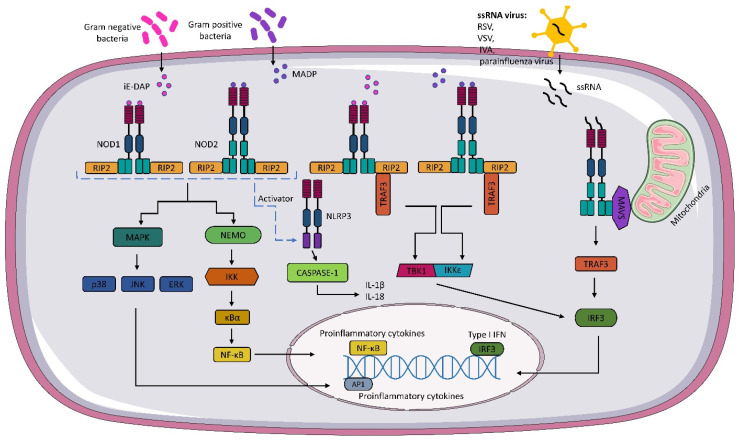Figure 1.
NOD1 and NOD2 signaling pathway. Gamma-glutamyl diaminopimelic acid (iE-DAP) and muramyl dipeptide (MDP) activate the nucleotide-binding oligomerization domains 1/2 (NOD1) and (NOD2), respectively. Activation of NODs leads to the recruitment of receptor-interacting serine/threonine kinase (RIP2). In the next step, activated RIP2 can lead to ubiquitination of the essential modulator of NF-κB (NEMO) and activation of the IKK (IκB kinase) complex. The activated IKK complex phosphorylates the inhibitor of kappaB (IκBα). The activated IKK complex phosphorylates the kappaB inhibitor (IκBα), leading to the release of NF-κB, which, after translocation to the cell nucleus, binds to kappaB (κB) elements, thereby activating pro-inflammatory cytokines. NOD1 and NOD2 also activate mitogen-activated protein kinases (MAPKs), such as p38, c-Jun N-terminal kinase (JNK), and extracellular signal-regulated kinase (ERK). NOD1 and NOD2 also interact with the NLRP3 inflammasome, which leads to caspase-1 activation and IL-18 and IL-1β production. Activation of NOD1 and NOD2 results in the formation of a TBK1 and the inhibitor of the nuclear factor kappaB kinase (IKKε) complex, which leads to the expression of type I IFNs. As well, through the interaction of NOD2 with mitochondrial antiviral signaling protein MAVS, the expression of IFN I genes occurs.

